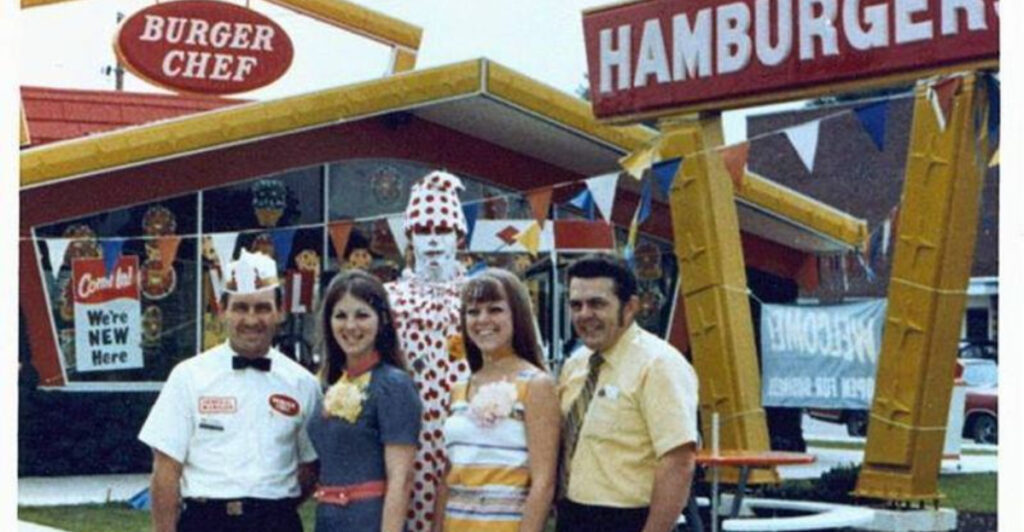Remember those restaurants where your family gathered for special occasions, where first dates unfolded awkwardly, and where late-night cravings were satisfied? The 1970s birthed some of America’s most iconic eateries—places with unique themes, unforgettable food, and atmospheres that created lasting memories. While most have disappeared from our landscapes, these 24 restaurant chains left an indelible mark on American culture and continue to live on in our collective nostalgia.
1. Sambo’s: 24-Hour Breakfast Empire
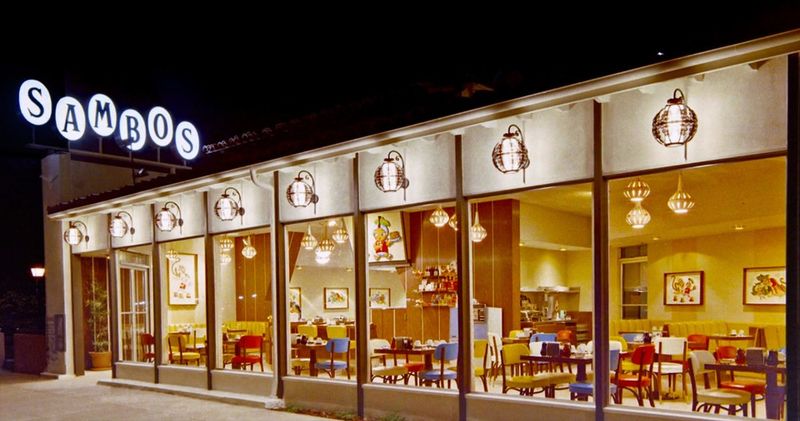
Before IHOP dominated the breakfast scene, Sambo’s reigned supreme with fluffy pancakes and endless coffee refills. Founded in 1957, this 24-hour diner chain expanded rapidly through the 1970s, eventually boasting more than 1,100 locations nationwide.
Their massive breakfast menu attracted night owls and early birds alike. Growing controversy surrounding the chain’s name and imagery eventually contributed to its downfall, with most locations closing or rebranding by the mid-1980s, leaving behind memories of late-night hash browns and bottomless cups of coffee.
2. Red Barn: Where Fast Food Met Farm Charm
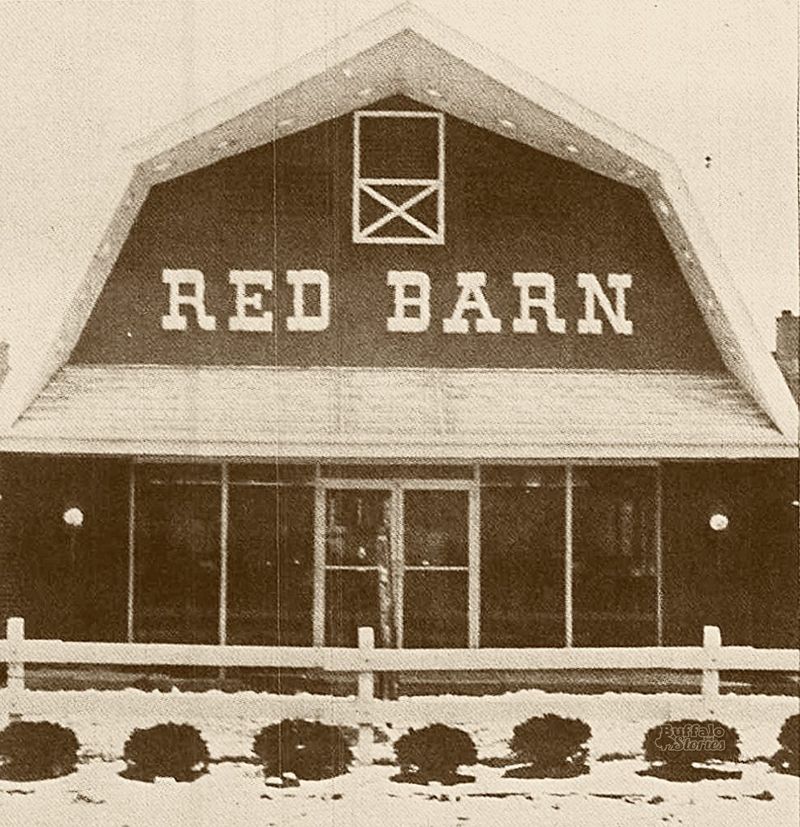
You couldn’t miss those bright red, barn-shaped buildings dotting suburban landscapes. Red Barn pioneered several fast-food innovations we take for granted today, including the salad bar concept in quick-service restaurants.
Their signature “Big Barney” burger rivaled the Big Mac, while the “Barnbuster” challenged the Whopper. With approximately 400 locations at its height in the 1970s, Red Barn’s folksy charm gradually faded as larger chains absorbed its market share, leading to its disappearance by the late 1980s.
3. York Steak House: Cafeteria-Style Steakhouse Sensation
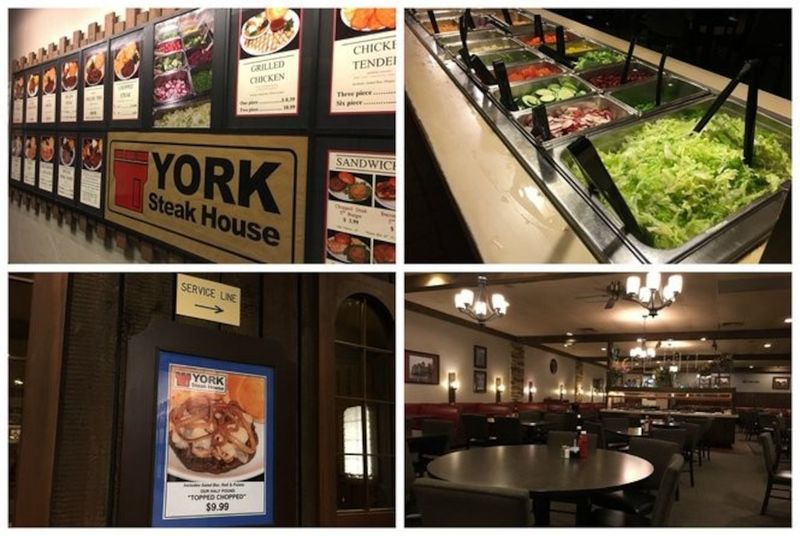
Imagine grabbing a tray and sliding it along stainless steel rails while selecting a sizzling steak, baked potato, and Texas toast. York Steak House revolutionized the steakhouse experience with its cafeteria-style service that made premium cuts affordable for middle-class families.
Dark wood paneling, stained glass, and dimmed lighting created an upscale atmosphere despite the self-service format. Nearly 200 locations thrived in shopping malls across 27 states during the late 1970s, but by 1989, almost all had vanished, leaving just one independent location in Columbus, Ohio.
4. Victoria Station: All Aboard for Prime Rib
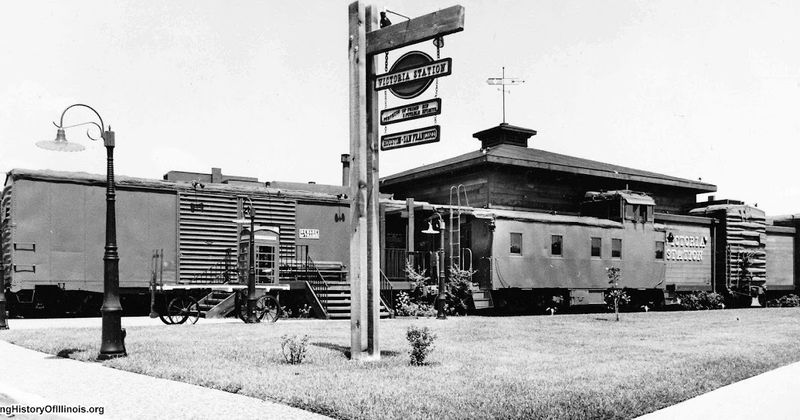
Dining in authentic railroad boxcars was Victoria Station’s unique gimmick. Each restaurant incorporated real train cabooses and boxcars into its architecture, creating an immersive railway dining experience complete with conductors’ uniforms and railroad memorabilia.
Johnny Cash even recorded a promotional album for the chain! Prime rib served from rolling carts was their specialty, drawing crowds to nearly 100 locations during the 1970s. Financial troubles derailed the concept by 1986 when bankruptcy forced most locations to close, ending this nostalgic dining adventure.
5. Wetson’s: New York’s Answer to McDonald’s

Before the Golden Arches completely dominated fast food, New Yorkers flocked to Wetson’s with its distinctive orange “W” logo. Founded in 1959 by Herbert Wetanson, this regional chain quickly became a Big Apple institution.
Their “Big W” burger was a direct competitor to the Big Mac, often preferred by loyal locals. With approximately 70 locations throughout the New York metropolitan area, Wetson’s thrived until 1975 when McDonald’s expansion and changing tastes forced its closure, leaving behind nostalgic memories for generations of New Yorkers who grew up with their unique recipe.
6. Burger Chef: The Forgotten Fast-Food Pioneer

Before the Burger Wars were dominated by McDonald’s and Burger King, Burger Chef was a major contender with revolutionary concepts. They invented the kids’ meal with toy—the “Fun Meal”—before McDonald’s Happy Meal existed!
Their “Works Bar” allowed customers to add their own toppings, a novel concept at the time. With over 1,200 locations by 1972, they briefly rivaled McDonald’s for fast-food supremacy. Hardee’s purchased the chain in 1982, converting most locations and erasing a brand that had once defined American fast food innovation.
7. Howard Johnson’s Ice Cream Parlour: 28 Flavors of Nostalgia
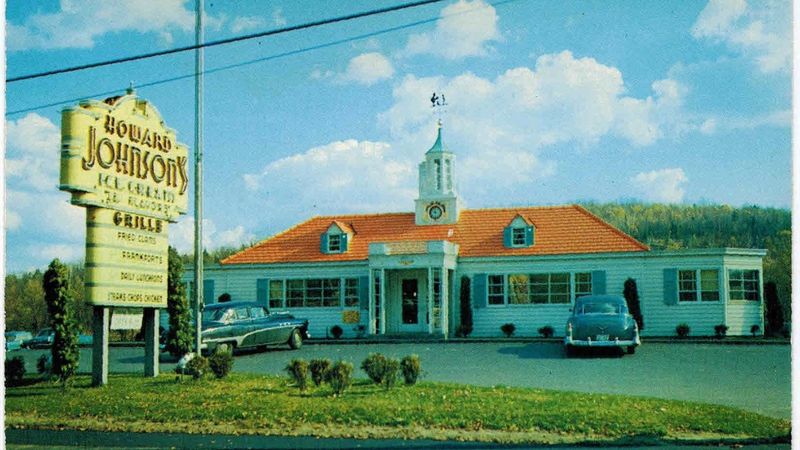
While many remember Howard Johnson’s restaurants, their dedicated ice cream parlours deserve their own recognition. These specialized locations focused exclusively on their famous 28 flavors when most ice cream shops offered just a handful of options.
Butter pecan and chocolate chip were crowd favorites, served in distinctive orange and turquoise surroundings. The parlours’ popularity in the 1970s made “Ho Jo’s” synonymous with American ice cream culture. As the parent company struggled with changing consumer habits, these sweet havens gradually disappeared, taking their unique flavors like macaroon and burgundy cherry with them.
8. Royal Castle: The Southern Slider Sensation
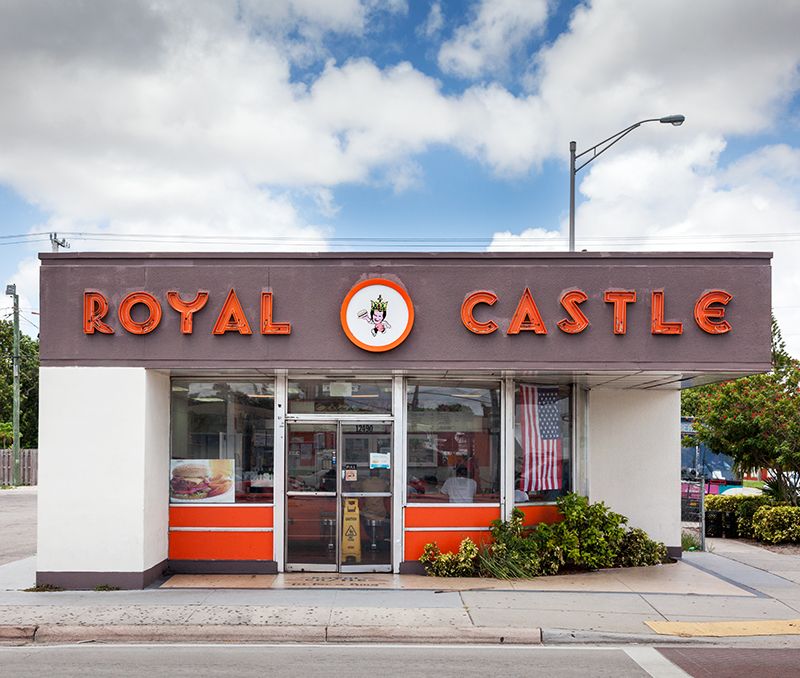
Long before White Castle expanded nationwide, Royal Castle ruled the South with its miniature burgers. Founded in Miami in 1938, this chain became famous for its five-cent sliders and freshly-squeezed orange juice—a Florida touch that distinguished it from northern competitors.
The 24-hour operation meant late-night revelers and early workers alike could satisfy their cravings. Nearly 200 locations dotted the southeastern United States during their heyday. Changing demographics and fast-food competition led to their gradual decline throughout the 1970s, with the original chain disappearing entirely by the decade’s end.
9. Shakey’s Pizza: The Original Pizza Parlor Experience
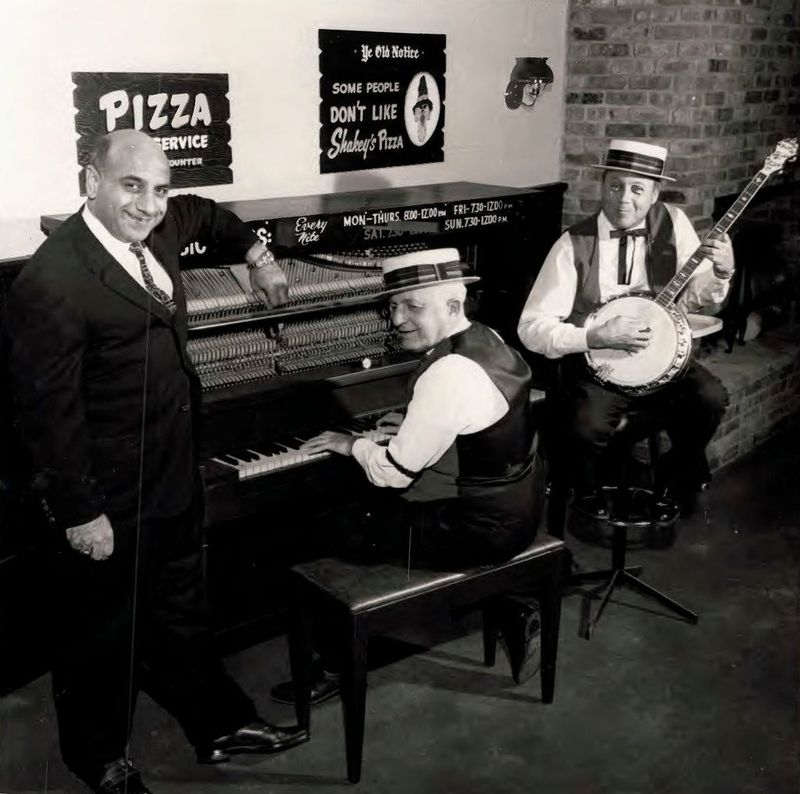
Dixieland jazz filled the air while families gathered around long wooden tables at Shakey’s, America’s first pizza chain franchise. Founded in 1954, Shakey’s created the pizza parlor concept, where entertainment was as important as the food itself.
Players banged out ragtime tunes on honky-tonk pianos while customers enjoyed thin-crust pizza and fried chicken. The communal seating encouraged conversation among strangers, creating a festive atmosphere. Though Shakey’s once boasted over 500 U.S. locations, most disappeared during the 1980s pizza wars, leaving only a handful of restaurants to carry on the tradition.
10. Farrell’s Ice Cream Parlour: Dessert as Theater
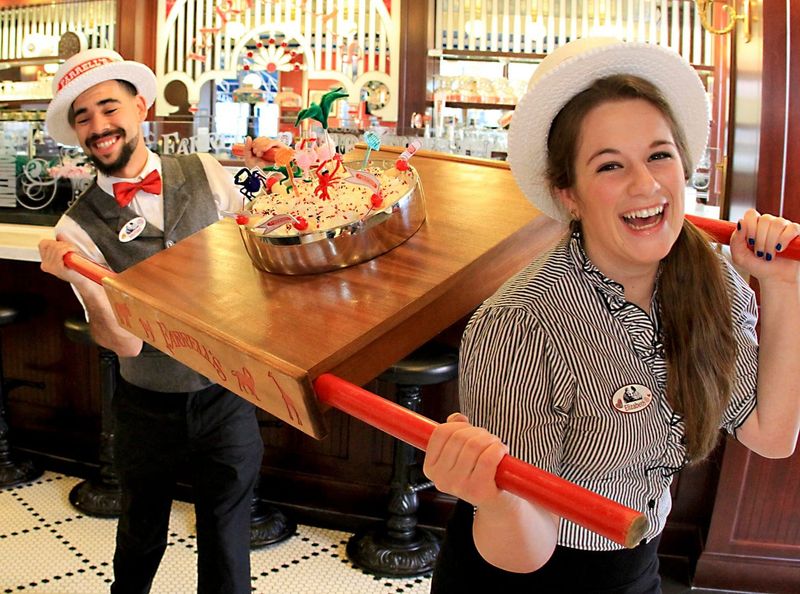
The siren wailed as servers rushed by carrying the enormous “Zoo”—a massive ice cream sundae requiring multiple people to devour it. Farrell’s wasn’t just about eating dessert; it was about spectacle!
Employees dressed in striped vests and straw boater hats sang for birthday celebrations and delivered candy-store treats with theatrical flair. Their menu featured outlandish creations like the “Pig’s Trough” challenge. After peaking with 130 locations in the 1970s, Farrell’s struggled with changing tastes and mall culture decline, with most locations shuttering by the early 1990s.
11. Carrols: The Fast-Food Chain That Transformed

Before becoming Burger King’s largest franchisee, Carrols operated as its own distinct fast-food brand. Their signature “Club Burger”—featuring a triple-decker bun—developed a devoted following in the Northeast and Midwest during the 1960s and 1970s.
Kids clamored for their collectible plastic cups featuring cartoon characters and sports figures. At its peak, over 150 Carrols restaurants dotted the American landscape. The company’s strategic shift to Burger King franchising in the mid-1970s meant the gradual disappearance of the original Carrols brand, though many locations simply converted rather than closed entirely.
12. Little Tavern: The Burger Joints That Fed Baltimore
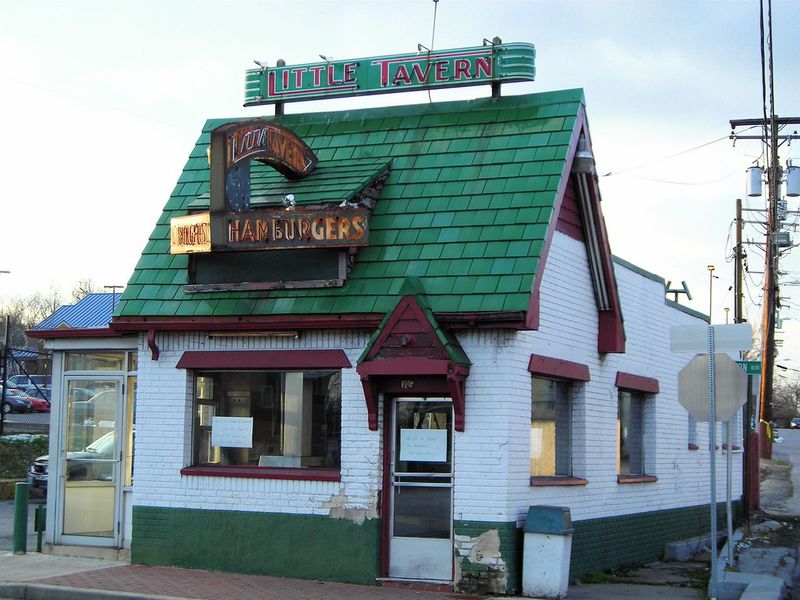
Those tiny white buildings with green roofs were unmistakable landmarks throughout the Mid-Atlantic region. Little Tavern’s slogan “Buy ’em by the bag” encouraged customers to purchase their small, square hamburgers in bulk—often selling six for a dollar during the 1970s.
The miniature restaurants, barely large enough for a counter and a few stools, became beloved institutions in Baltimore, Washington D.C., and surrounding areas. Devotees still reminisce about the distinctive onion-laden burgers and late-night atmosphere. Most locations closed during the 1980s, unable to compete with larger chains despite their cult following.
13. Horn & Hardart: America’s Legendary Automat
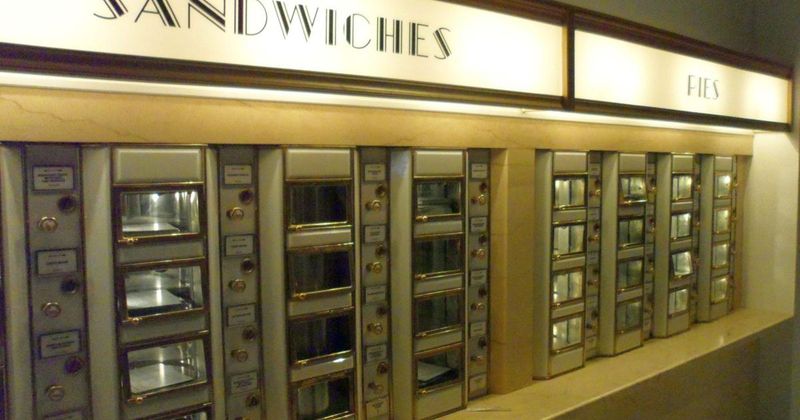
Gleaming walls of small glass doors hiding freshly-made food created a dining experience unlike any other. Horn & Hardart automats allowed customers to insert coins, open a door, and retrieve everything from sandwiches to pie without ever interacting with a server.
This revolutionary concept, which peaked earlier in the century, still maintained dozens of locations into the 1970s, particularly in New York and Philadelphia. The democratizing experience attracted everyone from businessmen to struggling artists. Rising food costs and changing urban demographics gradually forced these mechanical marvels to close, with the last automat shuttering in 1991.
14. Naugles: Fast-Mexican Food Before Taco Bell Dominated
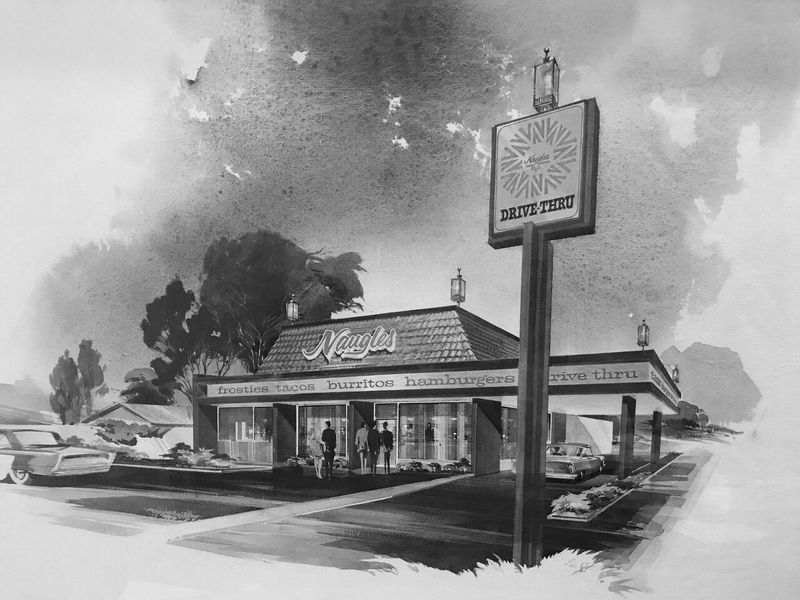
Spicy, generous portions made Naugles a beloved Southwestern fast-food institution before Taco Bell absorbed most locations. Founded by a former Del Taco executive, Naugles distinguished itself with unique menu items like the “Naugleburger” and cheese-topped “Macho” burritos that weighed nearly two pounds.
Their 24-hour drive-throughs attracted late-night crowds seeking hearty, affordable Mexican-American cuisine. The chain expanded to over 225 locations by the mid-1980s before Del Taco purchased and converted most restaurants in 1988. A recent revival has brought back some original recipes, reigniting nostalgia among devoted fans who never forgot those massive burritos.
15. Sandy’s: The Midwestern Fast-Food Favorite
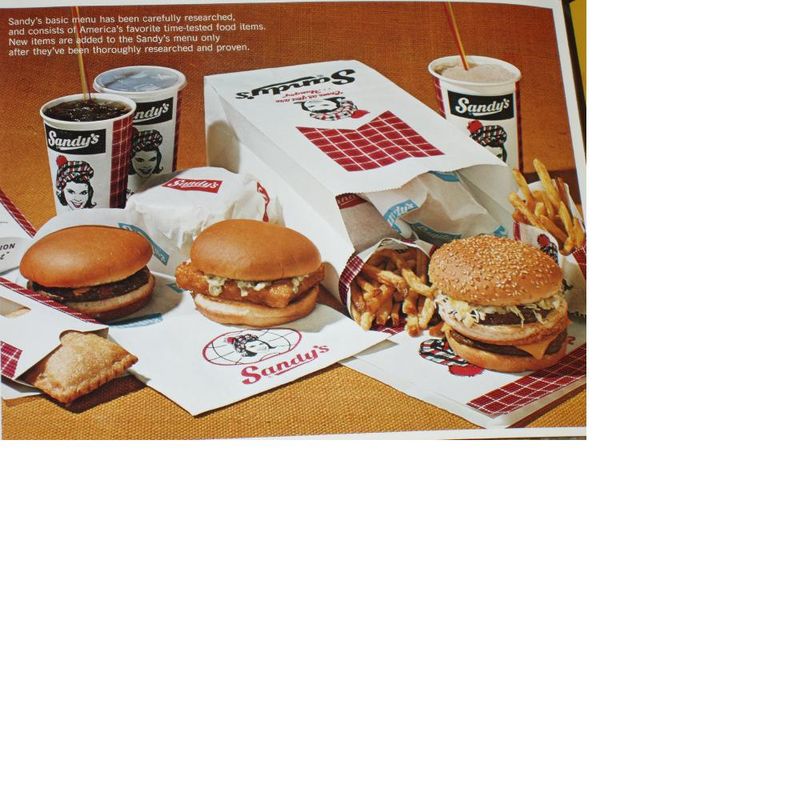
That smiling Scottish girl logo welcomed families to Sandy’s, a regional fast-food powerhouse throughout the Midwest. Known for square hamburgers and exceptionally thick milkshakes, Sandy’s provided serious competition to McDonald’s throughout the 1960s and early 1970s.
Many locations featured Scottish-inspired architecture with distinctive steep-pitched roofs. At its peak, over 250 restaurants operated across Illinois, Indiana, and neighboring states. Hardee’s acquisition of the chain in 1972 led to the gradual conversion or closure of most locations by the end of the decade, erasing a beloved Midwestern institution.
16. D’Lites: The Health-Conscious Fast Food Pioneer
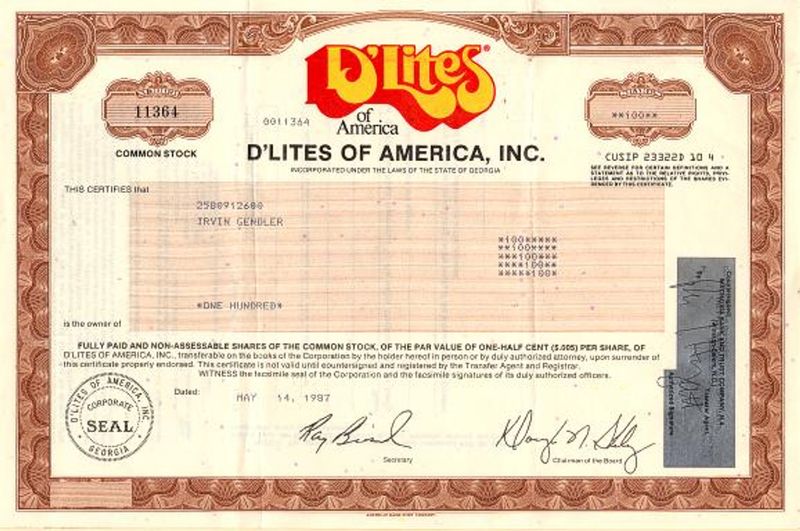
Long before Subway promoted healthy fast food, D’Lites attempted to revolutionize burger joints with lower-calorie, higher-quality ingredients. Their lean beef patties, whole grain buns, and fresh salad bar attracted health-conscious diners during the fitness boom of the late 1970s and early 1980s.
The chain expanded rapidly to over 100 locations across 23 states. Unfortunately, their higher prices and mixed messaging—healthy burgers still seemed contradictory to many consumers—led to financial struggles. Most locations closed by the mid-1980s, decades before healthy fast food would finally find mainstream success with other brands.
17. Forum Cafeterias: Elegant Self-Service Dining
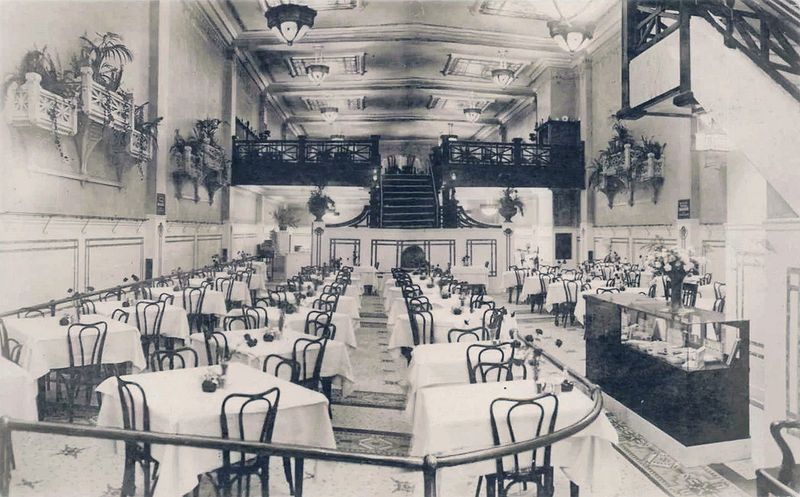
Ornate Art Deco interiors and gleaming cafeteria lines made Forum Cafeterias upscale destinations despite their self-service format. Crystal chandeliers hung above customers selecting home-style meals from behind spotless glass partitions.
Located primarily in downtown shopping districts and later in early shopping malls, these restaurants offered affordable elegance to middle-class families and business workers. The cafeteria model provided quick service without sacrificing quality, a winning combination during the mid-century. Most Forum locations disappeared during the 1970s as downtown shopping declined and food courts replaced traditional cafeterias in suburban malls.
18. S&W Cafeteria: Southern Comfort Food Served With Style
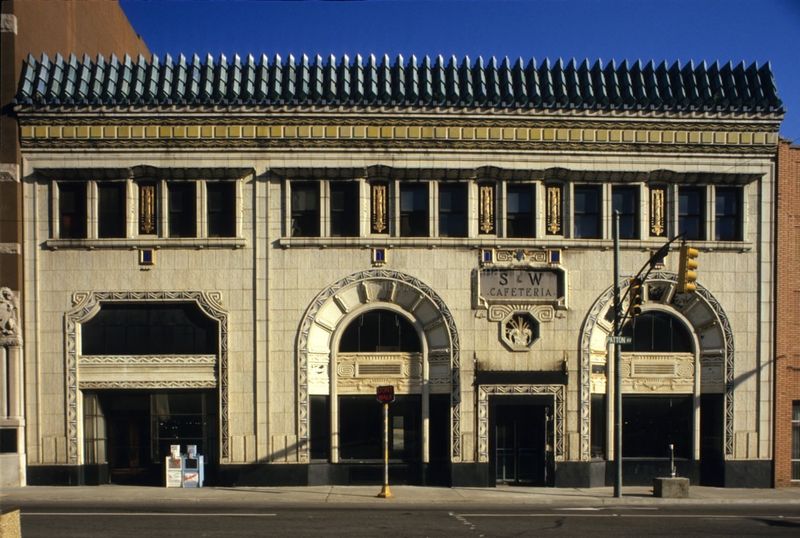
Southern hospitality met efficient service at S&W Cafeterias, where comfort foods like fried chicken, collard greens, and sweet potato pie were served cafeteria-style. Founded in Charlotte, North Carolina in 1920, S&W expanded throughout the Southeast during the mid-century.
Their locations often featured elegant architectural details and were fixtures in downtown shopping districts. Customers appreciated the ability to see food before selecting it, ensuring satisfaction with every meal. Most S&W locations closed during the 1970s and early 1980s as shopping patterns shifted to suburban malls and fast food gained dominance.
19. ShowBiz Pizza Place: Where a Robot Bear Rocked Dinner

Before Chuck E. Cheese dominated the kid-entertainment restaurant market, ShowBiz Pizza Place ruled with its animatronic band “The Rock-afire Explosion.” Families packed these noisy establishments to watch Billy Bob the Bear and his mechanical friends perform while enjoying pizza and arcade games.
The combination of food, games, and entertainment created a winning formula for birthday parties and family outings. Founded in 1980, ShowBiz quickly expanded to over 250 locations before merging with Chuck E. Cheese in 1984. The beloved characters were gradually phased out, breaking the hearts of kids who had grown up watching the bear-led band perform their robotic concerts.
20. Pup ‘N’ Taco: The California Hot Dog-Taco Hybrid
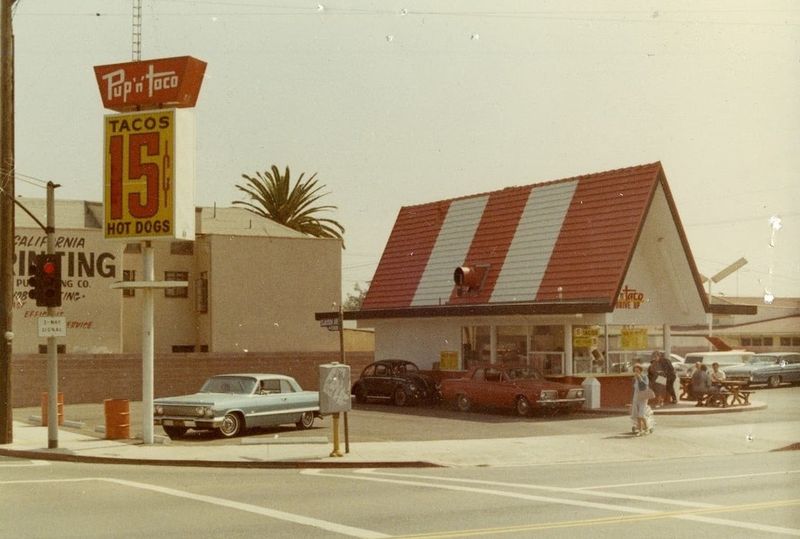
Only in California would a restaurant successfully combine hot dogs, tacos, and pastrami sandwiches under one roof! Pup ‘N’ Taco’s eclectic menu reflected the state’s diverse food culture, offering something for everyone at affordable prices.
Their distinctive orange and brown buildings with pointed roofs became landmarks throughout Southern California. Known for extra-large drinks called “Big Uns,” they attracted teenagers and families alike. The chain grew to 102 locations before Taco Bell purchased 99 of them in 1984, converting most to their standard format and ending this unique culinary experiment.
21. Velvet Turtle: Sophisticated Dining at Suburban Prices
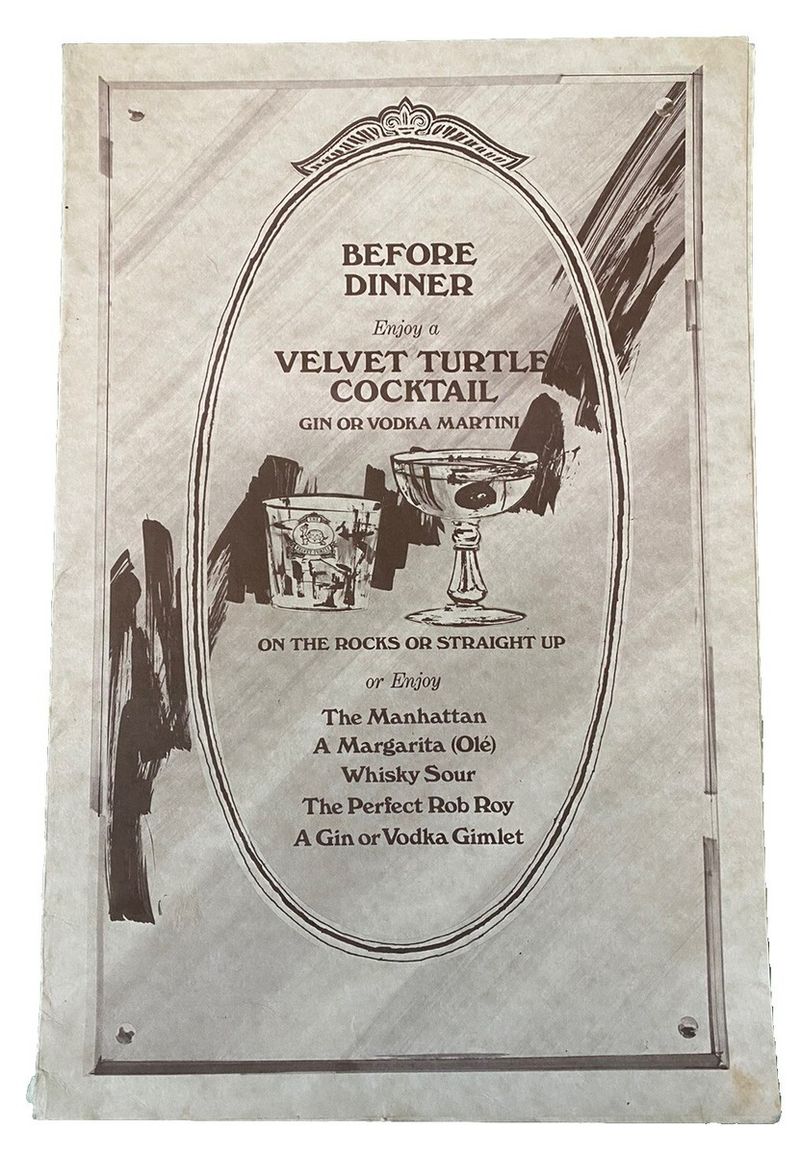
White tablecloths, dark wood paneling, and intimate lighting created an upscale atmosphere at Velvet Turtle without the downtown prices. This California-based chain specialized in steaks, seafood, and their famous clam chowder served in sourdough bread bowls.
Perfect for special occasions without breaking the bank, Velvet Turtle represented sophisticated dining for the growing suburban middle class. The chain expanded to approximately 20 locations throughout California and Arizona during the 1970s. Economic downturns and changing dining preferences led to its decline in the 1980s, with the final restaurants closing in the early 1990s.
22. Lum’s: Where Hot Dogs Steamed in Beer
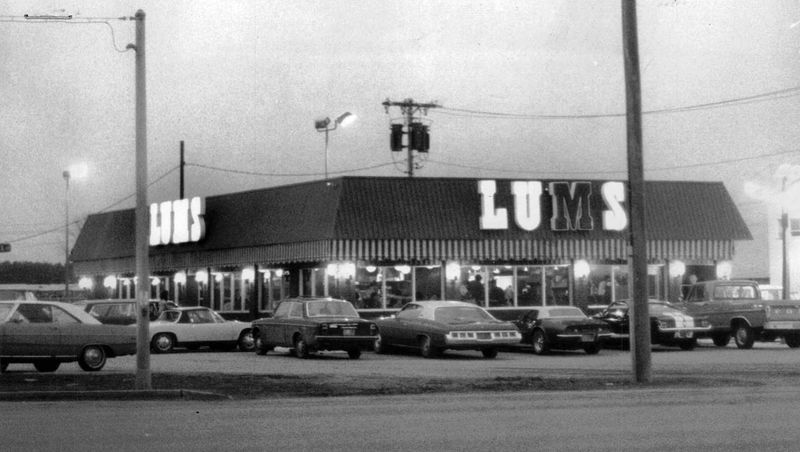
The aroma of hot dogs steaming in beer drew customers to Lum’s, a casual restaurant chain that expanded from a single Miami hot dog stand to over 400 locations nationwide. Their signature Ollieburger and beer-steamed hot dogs created a devoted following during the 1960s and 1970s.
Kentucky Fried Chicken founder Colonel Sanders was so impressed with Lum’s that he briefly owned the company in the early 1970s. The family-friendly atmosphere made it popular for casual dinners and lunch breaks. Financial difficulties led to bankruptcy in 1982, and most locations closed shortly thereafter, taking their unique beer-steamed hot dogs with them.
23. Gino’s: Where Football and Fast Food United
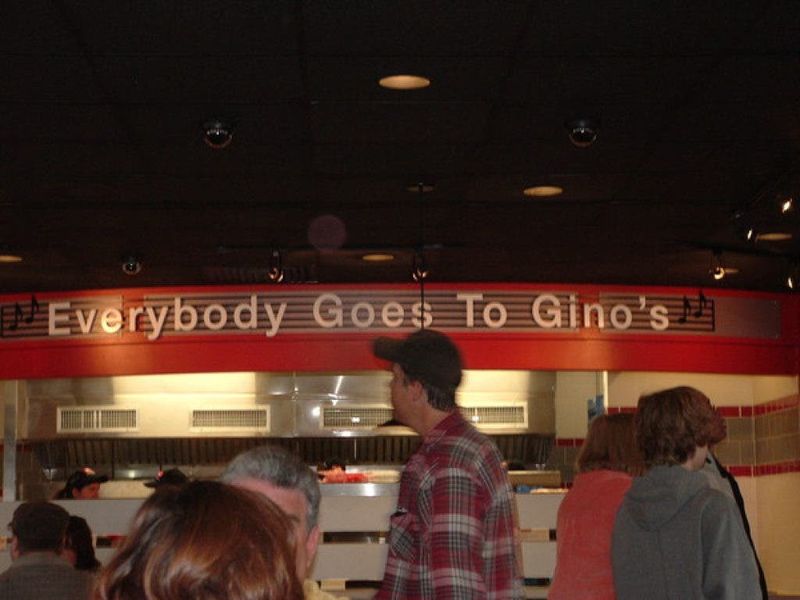
Founded by Baltimore Colts football star Gino Marchetti, this chain combined sports celebrity appeal with fast food innovation. Gino’s was among the first to offer both burgers and fried chicken under one roof, eventually becoming the East Coast’s exclusive Kentucky Fried Chicken franchisee.
Their “Sirloiner” steak sandwich rivaled better-known competitors. Sports memorabilia decorated the walls, drawing fans who hoped to spot Marchetti or his teammates dining there. With over 350 locations during their 1970s peak, Gino’s was acquired by Marriott Corporation in 1982, with most restaurants converted to Roy Rogers, ending this unique sports-themed dining experience.
24. Mel’s Drive-In: American Graffiti’s Iconic Hangout
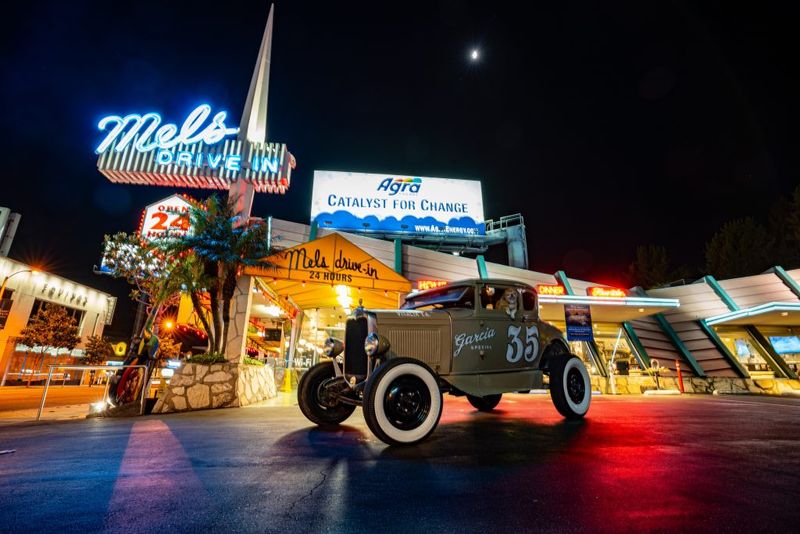
Forever immortalized in George Lucas’s film “American Graffiti,” Mel’s Drive-In represented the golden age of car culture and carhop service. The San Francisco-based chain became a cultural touchstone after the movie’s 1973 release, despite most original locations already closing by then.
Carhops on roller skates delivered burgers and milkshakes to customers in their vehicles, creating a social hub for teenagers. Ironically, the original chain had largely disappeared by the time the film made it famous. A revival in the 1980s brought back the name and concept, though these newer locations were more nostalgic recreations than direct descendants of the 1950s originals.

